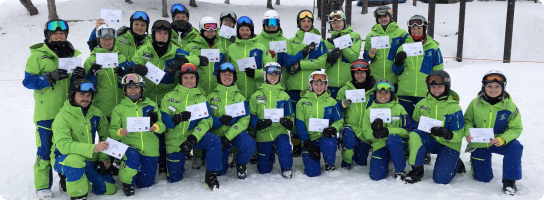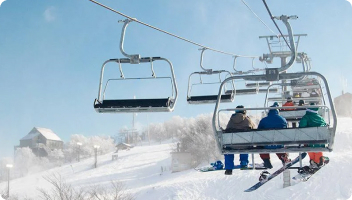As you embark on your next ski season, tax is probably one of the last things on your mind. But it certainly should be as doing it properly could mean thousands of extra dollars or euros in your pocket at the end of season – best used to plan your next season!
In many cases, you will be able to claim most, if not all, of you tax back at the end of the season if you are just staying in the country for the winter season.
Tax in Australia
Pay in Australia is taxed as you go, so tax will be taken out of your pay each pay cheque.
If you are a resident in Australia, there is a tax free threshold meaning that if you earn less than a certain amount for the year you won’t pay any tax. However, while you work, you will be taxed straight away, meaning that even if you earn less than the tax free threshold, you will still be taxed at the 19% rate (assuming that you earn less than around $20,000 for the year).
If you are a non-resident and on a working holiday visa, you will be taxed at 15% from the first dollar you earn.
Australia also has a superannuation scheme for retirement. This is currently set at 9.5 per cent on top of your pay and is automatically paid into a superannuation account which is inaccessible until you reach retirement age, or you permanently leave the country. Therefore once you leave Australia, you can claim your superannuation back.
The tax year runs from 1 July to 30 July.
Getting your Aussie tax back
Taxback.com has a straightforward and safe tax return service tailored to the needs of working holidaymakers, backpackers, and students working in Australia. With more than 18 years’ experience, Taxback.com guarantees the maximum legal refund and full tax compliance.
The average Income tax refund for Australia for Taxback.com customers is $2600.
All you need to do to claim your income or superannuation refund is simply register and the team will take care of the entire process, from start to finish. Get started here with a free refund estimate.
Tax in Canada
Both the federal and provincial governments levy income taxes on wages.
The first tax bracket is 15% and this will be deducted from your salary as you earn throughout the season. There is no tax free threshold in Canada.
For provincial tax, the lowest tax rate is 5.06% for the first bracket in British Columbia, up to 16% for the first bracket in Québec.
The Canadian tax year runs from 1 January to 31 December and you can make a claim to get some of your tax back after you have left.
You can go back 5 years to claim a refund.
Getting your Canadian tax back
Taxback.com’s team files over 322,000 tax returns each year and guarantees the maximum refund legally possible. All you need to do is simply register and Taxback.com will start the process for you.
The average tax refund Taxback.com customers get for Canada is $904.
You’ll need your T4 document to get your tax back which is the end of year earnings statement from your employer.
Get started here with a free refund estimate.
Tax in New Zealand
Tax is taken out of your pay as you earn in New Zealand. However, there is no tax free threshold. The first bracket rate on tax is 10.5% and 17.5% for the second bracket. The second bracket kicks in around $14,000.
If you don’t have a tax number, known as an IRD number, tax will be deducted at the highest rate of 38%. It is therefore a good idea to get an IRD number straight away upon arrival.
New Zealand does not have the usual suite of taxes of other countries. There is no payroll tax, no social security tax, no inheritance tax, no state/local tax, no capital gains tax (except on certain particular forms of investments) and no healthcare tax (only very low levy for the New Zealand accident compensation scheme).
The New Zealand tax year runs from 1 April to 31 March of the following year.
If you stay in New Zealand less than 183 days, you are a non-resident for tax purposes and only taxed on New Zealand income. If you stay longer than that, the full range of taxes applies, including on overseas income.
Getting your Kiwi tax back
Global tax refund leader Taxback.com can assist you in getting your tax refund from New Zealand quickly and stress-free.
Get started here with a free refund estimate.
The average tax refund Taxback.com customers get for New Zealand is $550.
All you need to apply is register here and Taxback.com will take care of the entire process from start to finish. Once your refund arrives, it will be transferred to your bank account anywhere in the world.
If you’ve lost your documents, Taxback.com can get replacements for you.
You can go back as far as 2003 to get your New Zealand tax refund.
Tax in the United States
In the United States, employers withhold income tax as well as Social Security and Medicare taxes from wages. Tax laws are highly complex in the U.S. given the mix of tax jurisdictions including Federal, State, Local and the Federal Insurance Contributions Act (FICA).
Each of these taxes may be partially claimed back if you earn less than a certain amount for the year.
Income tax is levied by both the State Government and the Federal Government on your wage. State taxes are deductible for federal tax purposes. Rates vary considerably between States and range from 1% to 16% of taxable income.
The U.S. tax year runs from 1 January to 31 December. Your tax return should be lodged by April 15 the following year.
Getting your American tax back
Taxback.com can get your U.S. tax back as most J1 visa-holders overpay tax when they are in the United States.
The average tax refund for U.S. Taxback customers is $800.
To claim your US tax refund, you will need your W2 form. The W2 form is the official government form that you receive from your employer in January outlining your earnings.
To apply for your refund, register here and Taxback will provide you with a free, no-obligation tax refund estimate and start the process for you. You are guaranteed a safe and secure application process with instant updates.
If you’ve lost your documents, Taxback.com can get replacements.
Get started here with a free refund estimate
Tax in Austria
Along with social insurance contributions, income tax will be deducted from your salary throughout the season. You will be paying around 15% tax on your earnings.
Income tax is known as Lohnsteuer. Tax withheld is akin to a down payment on your final tax bill which is calculated at the end of the tax year. The annual tax assessment is called Arbeitnehmerveranlagung (try saying that fast!).
You need a form called a Lohnzettel to claim your tax back. This is the official government document outlining your earnings and tax paid from your employer at the end of the tax year.
Many seasonal workers are eligible for a tax refund based on how long they worked, the type of job they had and the income they earned.
You have up to five years to claim any overpaid Austrian tax.
Getting your Austria tax back
Taxback.com will guarantee you getting the maximum refund possible without you having to worry about understanding the complex tax laws.
You can get an instant and free tax refund estimation of your refund here.
The average tax refund for Austrian Taxback clients is €650.
For more information about Taxback.com and how can help you get your tax back from Austria, get started here.
Tax in Japan
In Japan, taxes are automatically deducted from your salary as you earn throughout the season. This is done in conjunction with a self-assessment system whereby you determine your tax amount at the end of the tax year by filing a tax return.
The first tax bracket is 5% and the second tax bracket is 10% of income which kicks in after around USD18,700.
As you earn, you also have to contribute 11% of your earnings into the Japanese pension fund. You are able to claim back a portion of these contributions.
You may also have to pay local tax depending on the prefecture in which you worked.
The Japanese tax year is from 1 January to 31 December. If tax is not withheld by your employer, your tax is due in full by March 15 of the following year (mid April if you pay by automatic bank transfer).
You will also need to make two prepayments throughout the year – one in July (if in Japan at that point) and one in November.
You can claim your tax refund from Japan up to five years after you leave.
Getting your Japanese tax back
Taxback.com’s team of highly qualified experts will provide you with a free estimate of your refund and if you are happy with it, they will complete your application.
You will receive the maximum legal refund straight to your bank account and in the currency of your choice.
Get your tax back at at www.taxback.com
If you’ve contributed to a Japanese pension fund, you could be also due to claim a pension refund as soon as you leave the country. You can try Taxback.com’s Free Pension Calculator to get a rough idea of how much you’re owed.
If it wasn’t already obvious, this article contains affiliate links


